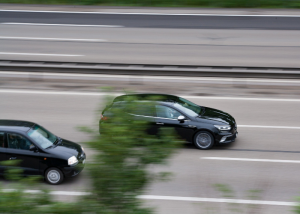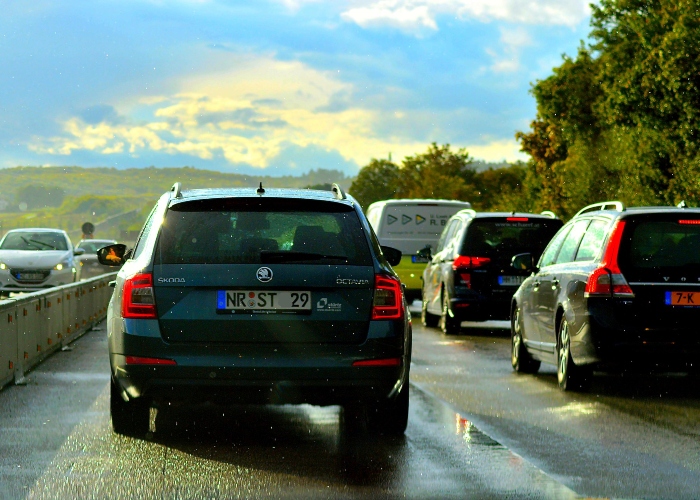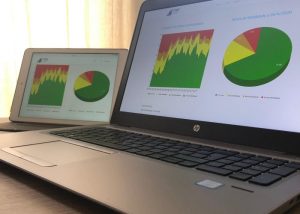50.4% ON THE STREET AND 49.6% AT HOME, ON MAY 4.
THE MAJORITY ALREADY LEFT THE HOME ON APRIL 30 AND MAY 4.
ON THE 1st MAY 64% STAYED AT HOME. SATURDAY AND SUNDAY THE VALUE WAS 59%.
THE TREND IS THE INCREASE IN MOBILITY AND “DEFINITION”. WHILE SOFT AND CONTROLLED.
The consultancy PSE studies the mobility of the Portuguese, continuously. This study is a panel that implies an APP installed on the mobile phones of the participating sample. Thus, the actual movement of the population is monitored 24 hours a day. This study is highly rigorous because it records the location via GPS and concomitantly because it is based on a statistically representative sample of the universe under study. Technical note at the end.
The working days of May 4th (49.6%) and April 30th (46.2%) were the days of least Confinement at Home since the day of the declaration of the state of emergency. The tendency is for deflation on both working days and weekends, but in a mild way, for now.
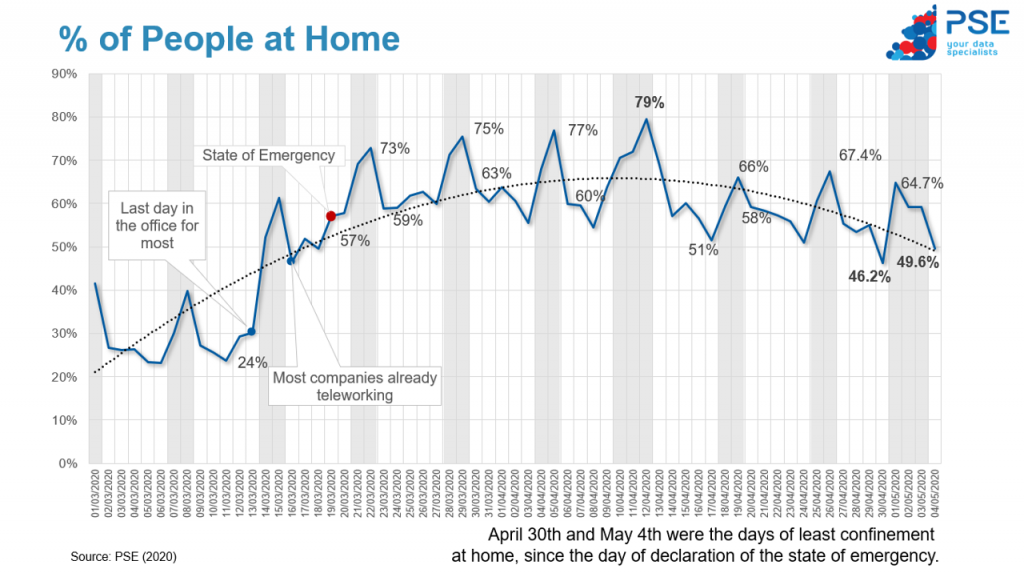
This Monday, confinement dropped -10.2% when compared to the previous Monday.
But as we stay at home more at the weekend than on weekdays, the practical result is that mobility is greater on weekdays.
Even so, if we compare Saturday with Saturday, Sunday with Sunday, and Monday with Monday, the last three days were respectively Saturday, Sunday and Monday with the least confinement since the declaration of the state of emergency.
Additional mobility limitation measures this long weekend have had an effect, especially on the holiday. The hot day of May 3 came to give some increase in deflation, but slight, as still 59% of Portuguese chose to stay at home. If, on the one hand, on Sunday, most Portuguese stayed at home (which is normal on Sundays). In the other hand, that this value represents a decrease of -12.2% in confinement compared to the previous Sunday.
The Total Confinement of the Portuguese, at home, can be decomposed between what is the Natural Confinement (who usually does not leave the house) and the Additional Confinement, made by the people who usually leave the house, but who are now at home.
This trend of greater mobility on working days, had the consequence of increasing the MOBILITY INDEX on April 30 and May 4, as can be seen in the following graph.
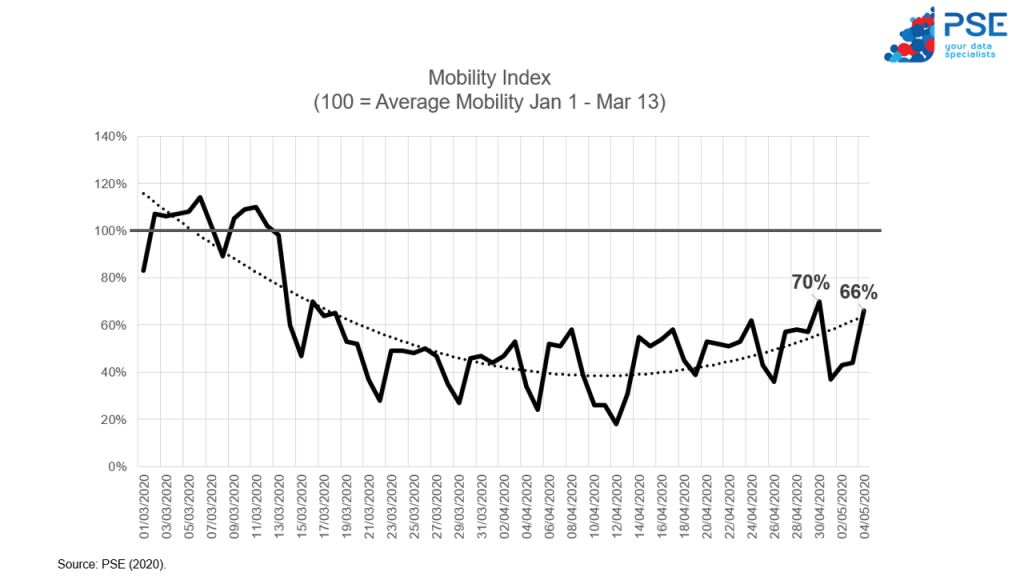
In conclusion, mobility in the last two working days (30 April and 4 May), was already 70% and 66% of pre-pandemic “normal” mobility.
PSE CONTACT:
info@pse.pt
OBSERVATION:
Since 2019, this study has produced data that are applied, above all, to gauge the audience of outdoor advertising, but also to assist city councils in spatial planning and in the management of mobility and transport. And also in behavioral studies of mobility and “shopper”, for other companies and entities.
TECHNICAL NOTE:
This study is the PSE panel, with continuous data collection through location monitoring and means of travel via mobile application of a panel of representative individuals from the Universe over 15 years old, residing in the regions of Greater Porto, Grande Lisbon, North Coast, Central Coast and Faro District. This study implies an APP installed on the mobile phones of the participating sample. So we monitor the actual displacement of the population, at each hour of the day. This study is carried out 24 hours a day. The data are obtained rigorously, via GPS and with the consent of the monitored sample. For a universe of 6,996,113 individuals residing in the studied regions, the margin of error attributable to the study is 1.62% for a 95% confidence interval.

